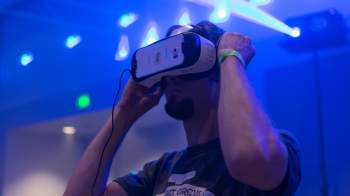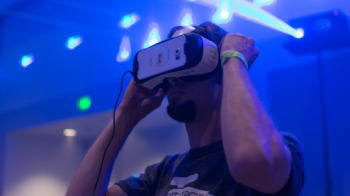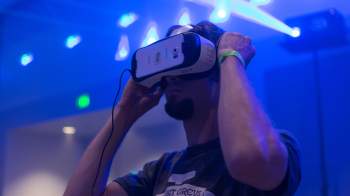VR needs a single socket solution
Marcos Angelides
Marcos Angelides, Strategy and Innovation Director at OMD looks at the current barriers to technology adoption, with a particular reference to virtual reality.
100 years ago the UK started to adopt a new bit of tech – electricity.
National rollout was a daunting task and it fell to private companies to lead the way.
On the face of it this made sense. Private companies were able to build infrastructure far quicker than governments – as profits are determined by speed.
The challenge however, was that each company had their own way of distributing electricity, including the plug sockets.
At the start of the 20th century there were over a 100 companies providing electricity. Which meant 100 different plug sockets on the market.
This forced people to make difficult choices over which supplier they opted for. It also put strain on manufacturers who had to choose which sockets they’d be compatible with.
It created a huge barrier to adoption, which almost led electricity to be another failed bit of tech.
That was until the government stepped in and introduced the national grid – and with it, the single socket solution.
Finally there was a universal way to distribute and share electricity. It drove confidence in the market; more people installed it in their homes and manufacturers began to build more products.
That was 100 years ago.
And yet we’re seeing the exact same challenge again with VR.
Over the past 3 years there have been almost 10 different hardware launches. And whilst they are all exciting and imaginative. Almost none of them work together.
You can’t naturally port content from Oculus to Stealth. Or the create the same experience between Hive and Sulon Q.
This has led people and brands to ask the same question they did with electricity. “Which one should I choose?”
Whilst hard core capitalists would argue that this will lead to greater profit for the brand who wins (like iPhone in the mobile market) – many would argue that when people are put under duress they revert to the simplest option. In this case, it would be to opt out of VR all together.
The danger has been further exasperated with the surprise hit of Pokemon Go, leading marketers to take another look at Augmented Reality.
Just like 100 years ago, we’re crying out for a single socket solution.
Unfortunately the government is not going to step in like it did with electricity. If VR is to succeed it will need to be worked out within the private sector – and history doesn’t provide too many examples of that.
So where does that leave brands who are ready to dip their toe?
Like any new technology, scale is everything. The less barriers there are to adoption the more likely it is to take hold.
Whilst the top end units are the most exciting their £400+ price point is a major barrier.
Which is why Google Cardboard is so interesting. It’s essentially free to the consumer, anyone can download the template and build a unit.
The fact it’s free means it has no risk. And when there is no risk there is no barrier to usage. The rise of search, social media and messaging apps are clear proof of this.
Media publishers like the New York Times are also stimulating adoption with campaigns like The Displaced – not just because of the quality content on offer but because VR units are being distributed at such mass scale.
This will drive confidence in the market both for consumers to use it and for brands to invest in it.
So whilst VR still has a long way to go before it becomes a norm rather than a novelty, finding a universal platform is a major step in that journey.
And perhaps through platforms like Cardboard, the industry has discovered its single socket solution after all.
Related content
Virtual reality new avenue for marketers
Learn moreVirtual reality experiences increasing
Learn moreImmersive media, virtual reality and a new form of media
Learn moreFuture Trends Volume 16: The Future of Virtual Reality
Learn more
Fast forward to 2030 with Futurescape
An in-depth exploration of the attitudes, innovations and media shifts that will shape the years ahead and redefine how we advertise by the turn of the decade



